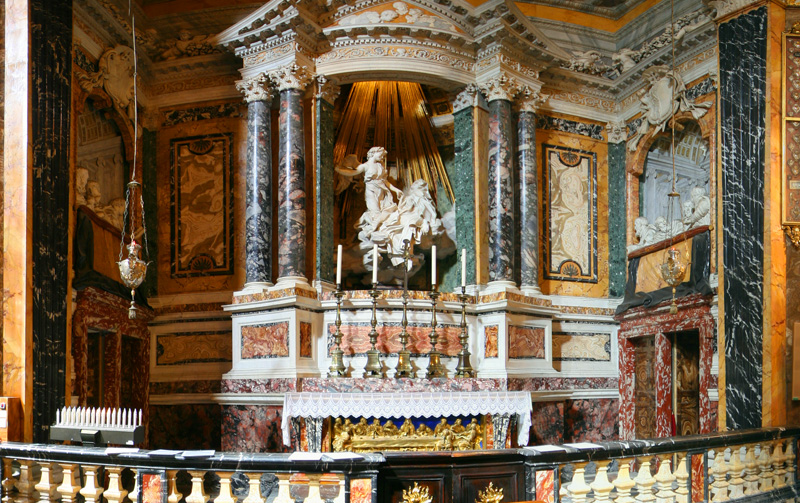The Ecstasy of St. Teresa
7:00 AM
 |
| The Ecstasy of St. Teresa, Bernini, 1645-52 |
Out of all the sculptures to display on the screen, this is not the one to show when the headmaster walks in.
The Ecstasy of St. Teresa is as suggestive as it is gorgeous. Viewed in a sexual and religious manner, the sculpture has defied the unsaid laws of 'Pope rule' at the time. Normally elegant and humble, the art work inside most chapels of the time were not as expressive as this one, with barely a thin line between naughty and zealously religious.
And yet, it's the drastic difference in this sculpture that highlights the awesome beauty and Bernini's incredible talent. Teresa of Avila (not to be confused with Mother Teresa) was born in 1515 and lived during an era where Europe was in more turmoil than the norm. She wrote various books on her link with God and many excerpts are like the structure-- almost borderline sexual. Her descriptions of her connection with God doesn't need a mind to be in the gutter. In fact, it almost sounds like it comes out of a erotica novel.
"I saw an angel near me, on the left side, in bodily form... He was not tall, but shore, marveously beautiful, with a face which shone as though he were one of the highest of angels... I saw in his hands a long golden spear, and at the point of the iron where there seemed to be a little fire. This I thought that he thrust several times into my heart, and that it penetrated my entrails. When he drew out the spear he seemed to be drawing them with it, leaving me all on fire with a wondrous love for God. The pain was so great it caused me to utter several moans; and ye tso exceeding sweet is this greatest of pains that it is impossible to desire to be rid of it, or for the soul to be content with less than God."
May Fifty Shades of Grey cower in shame.
Because of the exceedingly great connection Teresa has with God and the angel, Bernini portrays the sculpture and her moment of ecstasy with utmost precision. As dramatic as the sculpture may seem, it bodes well with St. Teresa's supposed experience. With her mouth partially open, eyes rolled upwards, and body limp, Bernini is somehow able to portray movement within the stone structure. The drapes, so intricately chiseled are perfectly extravagant, curled lightly at the bottom of the masterpiece. But for once, Bernini uses a different technique with the structure. Normally, he allows the viewer to view his piece from only one point of view, one perspective, but with The Ecstasy of St. Teresa, one cannot view just the sculpture alone. Around the piece, he sets the background. Underneath the work, lies a painted skeleton, as if St. Teresa has moved beyond the mortal world into an entirely different level. Above the work are both fake golden rays of "light" and natural light as well, peeping in from a window, bathing the sculpture in perhaps "Holy Light".
In total, The Ecstasy of St. Teresa, not only displays a beautifully portrayed, holy moment, but also illustrates Bernini's almost cheeky acknowledgement of his own skill.

0 comments